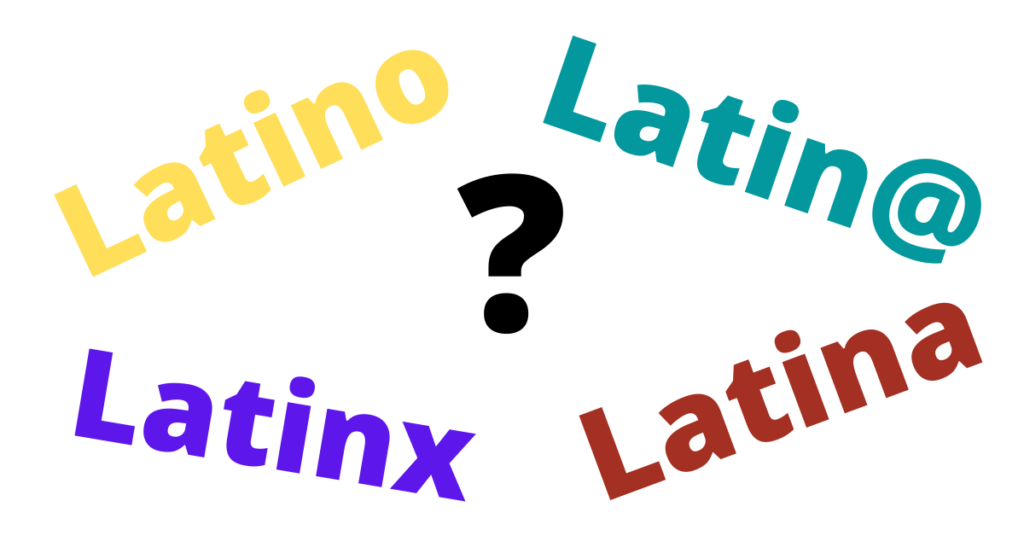
I was wondering, with regards to pronouns and noun endings, what do we do when we want to be gender neutral/inclusive (i.e. not having masculine being default for mixed groups, being neutral when not wanting to assume someone’s gender, variations for nonbinary/genderqueer folks).
This question generated quite a bit of discussion – and I hope it continues in the comments section as we all continue to learn from each other.
Traditionally, one would use the masculine pronouns and noun endings in mixed groups. For example, in a group of boys and girls, you would say chicos. Some people may say chicos and chicas – but many consider this redundant. You may often see it written as chicos/as. With that being said, I learned my Spanish in the 90s and language use and cultural shifts continue to change.
Let’s take the word Latino, which is someone of Latin American descent. The term Latinos originally included both male and females. Then the word Latin@ came into being (as well as chic@s, muchach@s, etc. to be more inclusive). The @ represented the “o” and “a” ending combined together to be more inclusive to females.
In the last several years, the term Latinx (pronounced la-teen-ex) is being used more. Latinx is more inclusive and includes any gender. The article, Why People are Using the Term ‘Latinx’ from HuffPost dives into the origins and uses of word more thoroughly. NPR also covered this topic a few years ago. Latinx: The Ungendering of the Spanish Language is well worth the 11 minute listen.
“The x [in Latinx], is a way of rejecting the gendering of words to begin with, especially since Spanish is such a gendered language,” explains Jack Qu’emi, from the article and podcast Writer Jack Quémi explains the meaning of Latinx. The article further discusses that similar to the use of they/them/their pronouns in English (instead of the gendered pronouns he/him/his and she/her/hers), the term Latinx is an attempt to include non-binary people, those who are neither male nor female.
But are all Spanish-speakers on board with the various terms and the attempt for the language to be more inclusive? According to a recent article by NBC News, many consider “Latinx” to be elitist. “As the term gains traction, some scholars are pointing out that there are Latinos who don’t see themselves reflected in the word. Some see Latinx as an elitist attempt to erase a history of more traditional gender roles, or as a distraction from other pressing issues facing Latinos in the United States.”
Are you now more confused than ever? As a Spanish student, are you not sure how to speak and write masculine and feminine words now? Having been learning and teaching the Spanish language for the past 30 years, it seems to me that the vast majority of Spanish-speakers still use the masculine and feminine ends without giving it a second thought. In fact, many Spanish-speakers may not have even heard about the –@ or –x endings. These endings are used more among the young, progressive, and university-educated Spanish-speaking population. With that said, one should be aware that as any language evolves over time, Spanish is evolving too and it is important to be aware of this. In my opinion, it is fascinating to see it change fairly quickly in just the last few decades. It will be interesting to see where the discussion and regular usage leads!
